A Poem By Bo McGuire
by Mark Bibbins, Editor
Super Moon
i take the feeling of you — stomp
it out with my black throat —
throw it down the cement hatch
it bleeds in gold rushes
i’ll be up all night — moon
headed — stiff as the wind i sniff
until i have enough desert in me
knifing the boy inside a man — i moan
this is how i know i am cowboy — my bones
screaming a strut to the sinners’ shrine
in the barrio — ghosts
i used to know who won’t moan
me now — i’ve become the mirror i watch
the moon pull back my skin
this old town may be as far as i go
all angled in the face — l.a. in the eyes
in the most beautiful way — tucson —
you stab my heart over 100 times
go look in the mirror — he’s the only person
true enough to tell how long you’ve been gone —
let’s go — i say when i mean
let’s never stop
let’s lie cheat & steal
love with wrong men getting arrested — hollerin’
save my banjo, baby — it’s worth all the fight
i give up
Bo McGuire hails from Hokes Bluff, Alabama. He stares when people get angry on the phone and believes in Dolly Parton above all things. He writes poems, hammers out motion pictures, and is currently studying in NYU’s graduate film program, where he was selected by Spike Lee to receive The Sandra Ifraimova Production Award for Shitbird, a serialized drama he is writing and developing for television.
You will find more poems here. You may contact the editor at poems@theawl.com.
Andy Bell Is 50
Erasure’s Andrew Ivan Bell turns 50 today. You know what is one of the happiest songs I know? This is one of the happiest songs I know.
A Crazy Tree Grows in Brooklyn
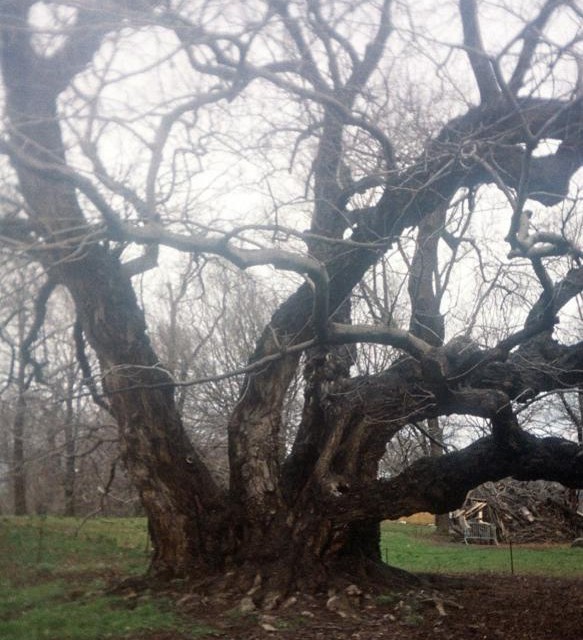
Follow the slope downward, to the east, toward the meadow, to where the earth levels off and there are crocuses coming up through a damp layer of wood chips. This is where the tree is. Behind the tree, the ground rises into a sort of berm between the Botanic Garden and Flatbush Avenue that breaks the siren howl and traffic rumble. A wide asphalt pathway meanders in front of it. On a typical spring day visitors usually pause here to admire the tree, and read the placard with its name and chuckle, because it’s a caucasian wingnut.
The tree’s branches are thick and deeply ridged, twisting out from a dense thicket of knots and gnarles in its wide, wide trunk. One branch sticks out from the base at an extreme low angle, and bears special mention in Richard J. Berenson and Neil Demause’s The Complete Guidebook to Prospect Park and the Brooklyn Botanic Garden: “[the branch] charges off to the east with seeming disregard for the laws of gravity, suspended in midair by only the most tenuous hold on its trunk.” It’s the kind of branch that — were Sherwood Forest in the Caucasus Mountains — Robin Hood would leap upon. It’s no longer suspended in midair, but held up by a log, cut into a crutch. The whole thing is a patched-together tree, really: Metal cables strung between some of the tree’s higher branches keep them from falling, too.
On a recent, cold and drizzly spring morning, I met Chris Roddick, an arborist at the Brooklyn Botanic Garden. He’s responsible for the wingnut, and most every other tree, too. Roddick has been at the garden for 20 years, but you wouldn’t know it. He has a boyish face and a surfer’s drawl; indeed, he paddles out in the Rockaways when he gets the chance, though he doesn’t go out enough. I told him I didn’t think anyone who surfed felt they went surfing enough, and he agreed.
When we got to the tree, we stood for a moment in silence, considering it. Roddick broke the quiet and said that he thinks the tree’s magic has to do with its architecture. “It just has the form of looking ancient,” he said. It isn’t, as far as trees go. It was planted in 1922 from a sapling, not a seed, so it’s maybe about 100 years old — which is about as old as caucasian wingnuts get. Plenty of oaks in the gardens are older. Still, “it’s a veteran tree,” he said. “That’s what we call it. We have about a dozen or so veterans that require careful management.” I asked him what he meant by management and he replied, “Well, you don’t want the tree to fall over and kill someone.”
That the tree is falling apart, yet still standing, is another aspect of its allure. There used to be some black walnuts nearby. Because they are tall, sturdy trees, when Hurricane Sandy swept through, they bore the brunt of the storm, sparing the wingnut. Unlike the walnuts, the wingnut is a relatively short tree, with branches that arch outward, not up, and grows as wide or wider than it is tall. It seemed to me an evolutionary misstep — growing branches it could not support. Far from it. “Wingnuts create millions of seeds — the seeds look like wingnuts, which is how it gets its name,” Roddick said. “Anyway, as the tree falls apart, the wood breaks down, creating really nice soil. It creates a nursery underneath itself. For the individual tree, it may not be so smart. But for the species, it’s great.” He said that a few years ago, a pair of scientists from Georgia visited the gardens and told him that back home, in the Caucuses, certain forests are almost nothing but wingnuts. “These trees take a stand in the forest and outcompete everything else,” Roddick said, then added, “It’s because they’re about the group, not the individual.” He pointed to a strand of four-year-old wingnuts coming up on the berm — offspring of the veteran. They’ll have to be pulled out, eventually, because they’ll get to big, and room will need to be cleared for other species of tree.
As Roddick was considering the strand of wingnut saplings, and what he may have to do with it, a trio approached. Roddick introduced me to Palmer Koelb and his wife Debbie, who were taking in the garden with Brian Funk. Funk maintains the Japanese garden, and Palmer and Debbie were down from their New Hampshire nursery to deliver a pair of dwarf white pines. Together, we approached the old wingnut’s wide trunk and peered into a vast hollow. Most of the wood inside had decayed. Through the darkness, in the bottom of the hollow, a raccoon carcass was rotting. “That’s good,” Roddick said, unironically. The decay would feed the soil, and feed the tree. He ran his hands along some of the gnarls surrounding the gash that opened up into the hollow. “This is the woundwood,” he said, “the densest wood in the tree.”
Along with their nursery, the Koelbs run a Japanese stroll garden. The grounds — and their business — is called Shin-Boku. “It means the principal tree,” Palmer said. Years ago, in Japan, Palmer and Debbie saw a 400-year-old black pine that was the principal tree in a strolling garden. It was so beautiful that they took the name for their nursery. I asked Palmer how old the dwarf pines were, and he said, “We’ve been taking care of them since the seventies.” They’re what’s called specimen trees — carefully cared for and pruned to grow just so, a little like bonsai, but larger. Palmer and Debbie said goodbye, but as they wandered off, Roddick pursued them to ask if he could take a picture. As Roddick walked back towards the wingnut, still grinning, I thought of a true and great thing John Fowles once wrote in his essay, “The Tree”:
We feel, or think we feel, nearest to a tree’s ‘essence’ (or that of its species) when it chances to stand like us, in isolation; but evolution did not intend trees to grow singly. Far more than ourselves they are social creatures, and no more natural as isolated specimens than man is as a marooned sailor or a hermit.
Ryan Bradley is a writer and editor in New York.
Elbow, "My Sad Captains"
If you are looking for something sweet and sad and maybe a little wistful as we wend our way into the weekend you have come to the right place, because this Elbow clip is all those things. If your tolerance for wistfulness is low today, try this instead. [Via]
If We Ignore Our Decrepit Bridges They Will Heal On Their Own, Right?
“I would not use the word crisis. Things are a little bit more urgent than they have been in the past. I would say there is concern,” says some libertarian professor of the nation’s 63,000 structurally compromised bridges. So the next time the span you’re crossing seems a little creaky or in bad repair, don’t worry too much about it. It’s probably not going to collapse and send you hurtling to the treacherous waters below. Probably.
The Male Topknot Takes New York
by Natalie McMullen and Choire Sicha

Back in early 2012, the Times Style section tried to convince us of the coming of the “man bun” to Brooklyn. It was too early and it was really a stretch: For famous cases, they had to rely on tennis players “Alexandr Dolgopolov and Xavier Malisse.” (And Malisse was more prone to wear an actual ponytail.) The man bun, they helpfully defined, is “similar in form to the topknot worn by many women… but it is often worn slightly lower on the head.”
The Daily News gave it a whirl last November, noting that Jake Gyllenhaal was top-knotting at SoulCycle; the Guardian pointed out that the fashionable topknot is not as far-forward on the head as a Sikh topknot.
Accurate! But the topknot is not a winter hairstyle. And now winter is over.
Throughout our terrible winter, the topknot has been growing in power in Los Angeles, and now, finally, with the coming of spring, it is taking New York — a fairly rare trend to move west to east. We sent our photographer Natalie McMullen out to the streets over the last week to assess the extent and spread and variety of the male topknot. “They include European man bun, David Foster Wallace/academic/90s, topknot in progress, and half-up topknot,” she noted. True! SoHo, she noticed, was a topknot epicenter.
The diversity of the topknot is its mystery. The male topknot style runs the gamut from the sloppy — “Oh I’m just late to yoga” — to the predatory — “I’m a supposedly sensitive man in Williamsburg who also knows how to use the pivot and kino on a hapless young woman.” The topknot can be a great display of vanity or an expression of cool nonchalance. Our research shows that it’s particularly attractive to men with slippery white-person hair, but does excellent things for people of all hair types. It can be repellent or sexy, sleazy or mystic. It’s all in the execution. It’s a look so versatile, after all, that women can wear it too. (Yup, there’s even a lady topknot in these photos.) Prepare however you please for the summer of the topknot.

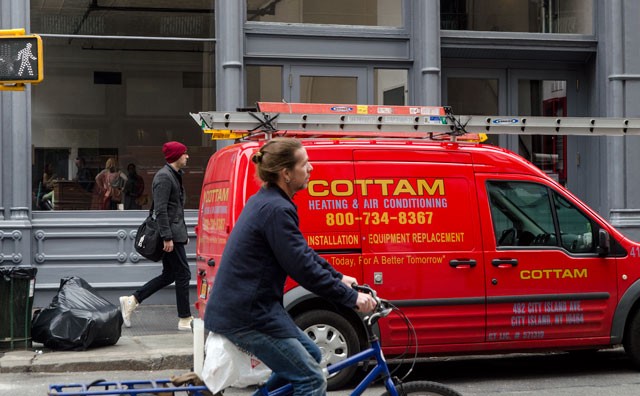
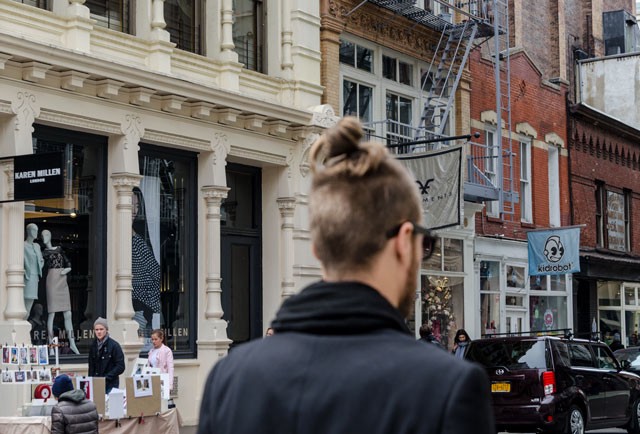
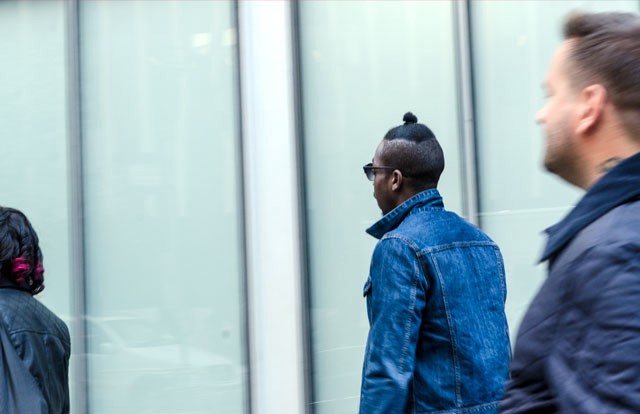
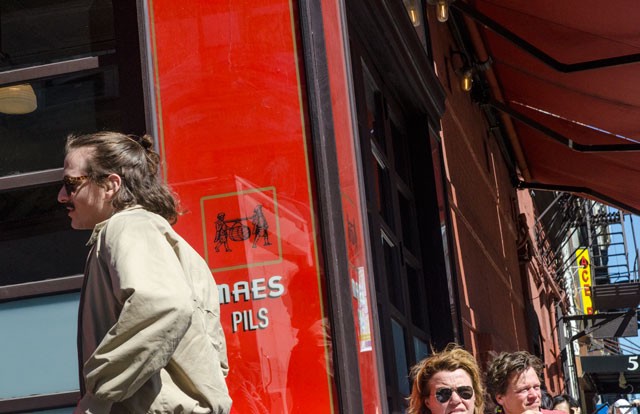
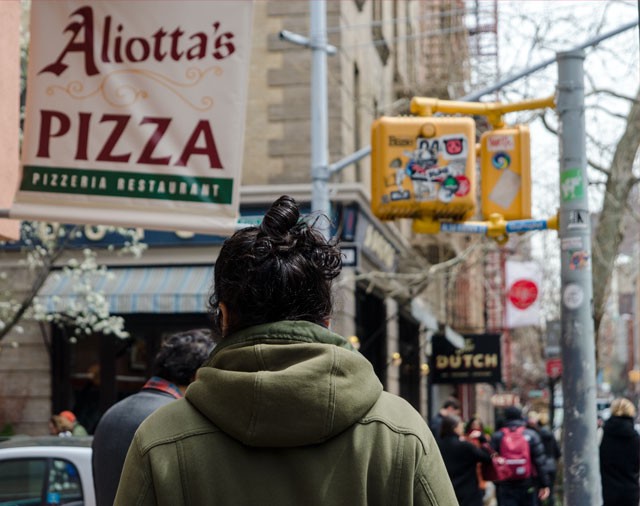
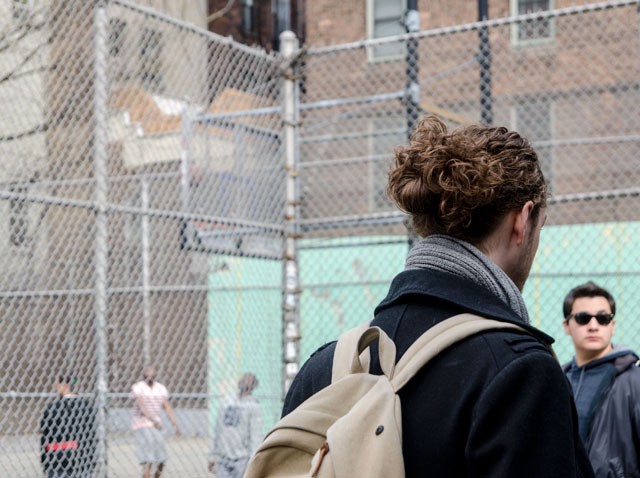

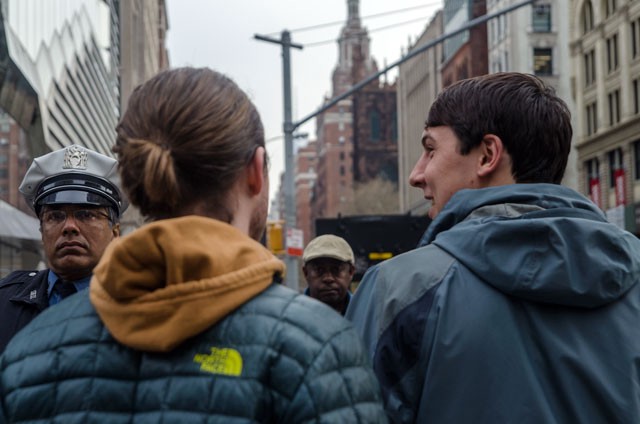

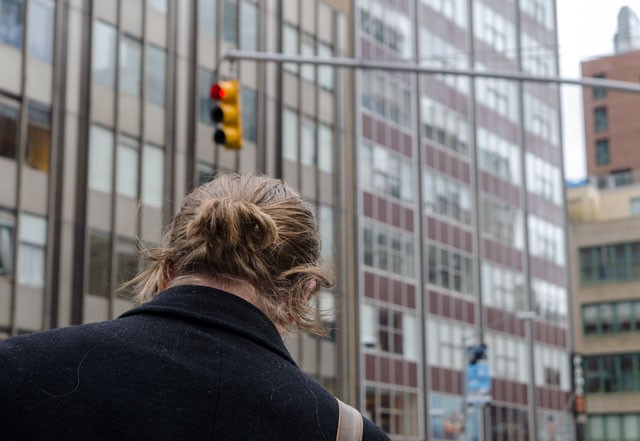
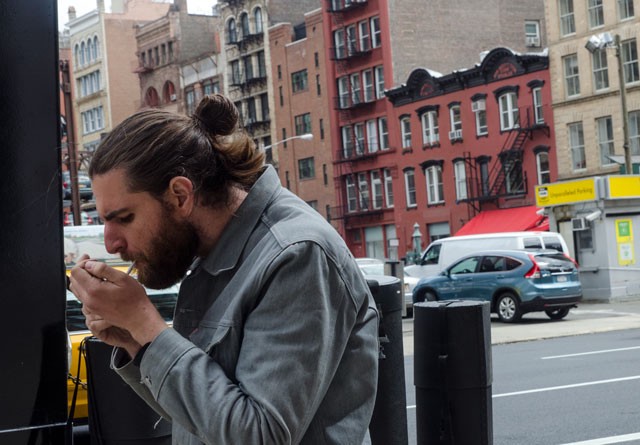

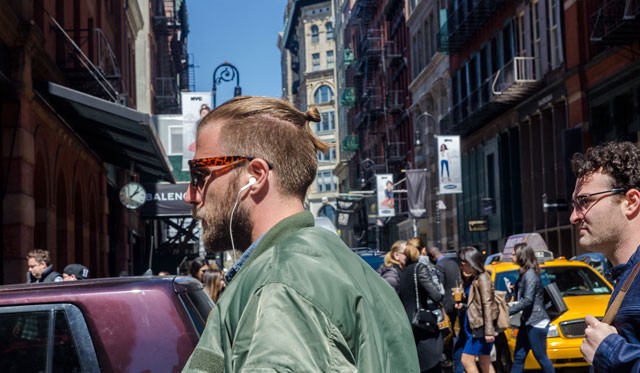
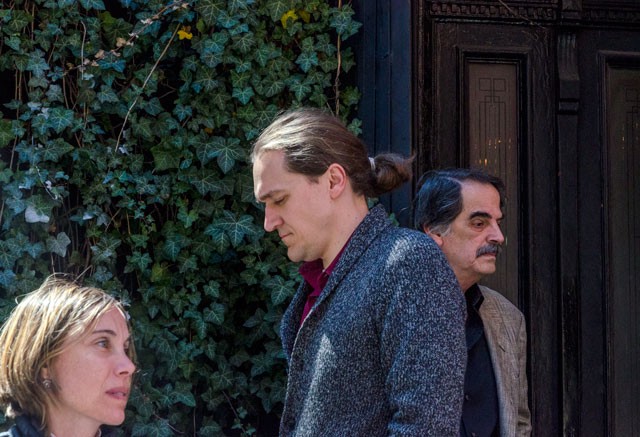
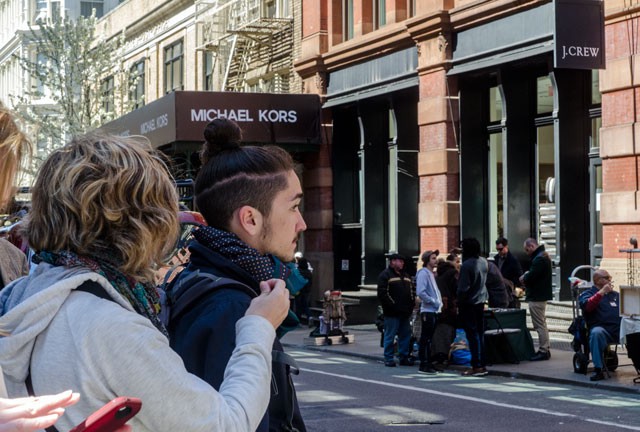
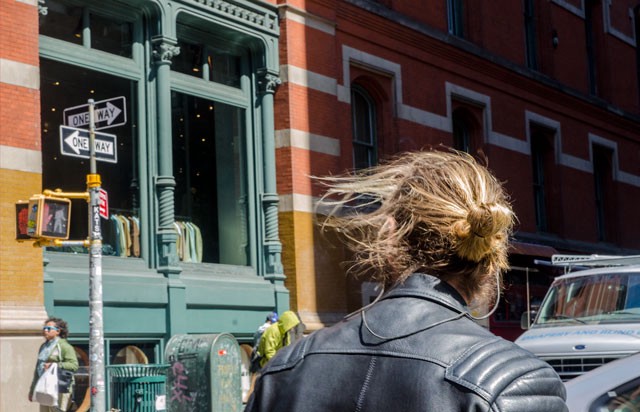

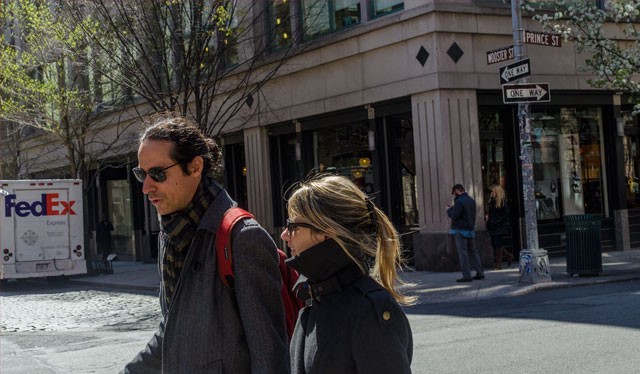

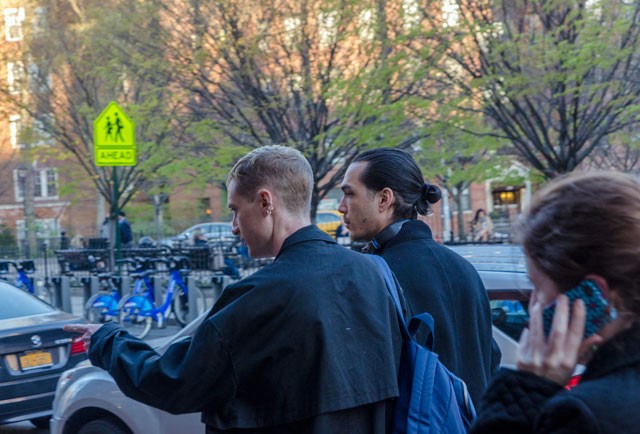

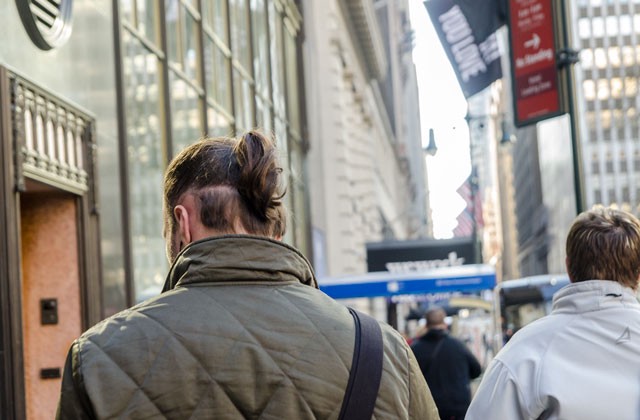
Natalie McMullen is a street photographer, culture critic and food writer. She is an archivist of the resonant, a nerdy polisher of words, and a lifelong scholar on love and relationships. She is currently resident photographer at The Awl.
Maybe Conservatives Really ARE That Stupid About How Much Their Support Depends On Racism, Instead...
Maybe Conservatives Really ARE That Stupid About How Much Their Support Depends On Racism, Instead Of Just Lying About It
“When certain conservatives object to liberal characterizations of the American right, and when they bristle at suggestions that conservative policies draw some of their political vitality from unreconstructed racists, or resentful white voters, or anything other than ideologically pure freedom fighters, they aren’t playacting. At some point, to those conservatives, willful blindness to the political power of white conservative populism became unwillful. As far as they were concerned, anyone arguing that welfare-state opposition (or tenth-amendment fetishism or any other conservative hobbyhorses) derived any political support from racist whites was trafficking in racial McCarthyism. Perhaps at some point they had assumed a defensive crouch to protect themselves and their tribe from an uncomfortable reality, but eventually they grew comfortable in it.”
Mangled Clown Corpse Tweets

“’Selfies…here I come!’ the company quoted Ronald McDonald as saying in its announcement on Wednesday. Mr. McDonald won’t get his own Twitter handle, but the company will post comments attributed to him using the hashtag #RonaldMcDonald.”
— The fresh visage of Ronald McDonald, all but buried in recent years as McDonald’s seemingly realized that modern children cannot be reliably plied into gorging themselves on fried slivers of potatoes and industrial-grade beef patties assembled by workers so underpaid that the company itself has suggested that they get a second job by a weird, creepy clown, proves that no #brand can resist the lure of Twitter, even dead ones.
College Activist Stunt Ushers In Dialogue On Serious Issue
“Jewish students living in an NYU dorm woke up Thursday to find threatening ‘eviction’ notices left by pro-Palestinian activists, officials said. The notices — stealthily delivered in the dead of night by members of NYU’s Students for Justice in Palestine — warned students at the Palladium Hall residence that their suites were scheduled for demolition.”
— Whatever your feelings on the merits of this effort, I think we can all agree that New Yorkers of every religion, ethnicity and political persuasion should come together in support of the demolition of NYU’s Palladium Hall. Those of us who live in the territories occupied by NYU have been oppressed for too long.
